
Roots
Before the whisper of silk against a sleeping head became a cherished nightly ritual, the earliest strands of human hair, in their wild, untamed glory, faced the raw elements of a world unyielding. A fundamental understanding of hair’s inherent fragility, its susceptibility to the sun’s fervent embrace, the wind’s relentless caress, and the earth’s rough textures, must have dawned upon our ancestors with quiet certainty. This deep-seated awareness, perhaps observed through the gradual fraying of locks or the brittle tips after a long day’s toil, laid the groundwork for humanity’s first protective gestures. These initial attempts at safeguarding hair were not born of vanity, but of a primal wisdom—a recognition that healthy hair was a sign of vitality, a shield against the environment, and a marker of one’s place within the community.
The earliest forms of hair protection likely involved natural coverings, drawn from the immediate surroundings. Leaves, animal hides, and later, coarsely woven plant fibers, offered rudimentary shelter. These were not merely functional; they began to shape the very contours of early human appearance, subtly influencing cultural identity and collective memory. The journey of understanding hair’s needs, from its basic structure to its complex responses to external forces, commenced with these rudimentary observations, forming an unbroken chain of inquiry stretching from the dawn of humanity to our present moment.

Early Human Hair Practices and Preservation
Long before the spinning wheel or the loom, human ingenuity, driven by necessity, sought methods to preserve what was precious. Hair, an outward manifestation of health and sometimes spiritual connection, required attention. Early communities, observing the resilience of certain plant materials and the insulating properties of animal skins, began to repurpose these for personal adornment and defense.
The choice of materials was dictated by what was available, shaping local traditions in distinct ways. For instance, in regions abundant with fibrous plants, elaborate braiding techniques might have been developed, not only for aesthetic appeal but also to compact and guard the hair from environmental stressors.
Archaeological findings, though sparse on the specifics of hair care, often reveal artifacts associated with personal grooming or adornment. Combs carved from bone, pins fashioned from wood, and pigments derived from natural sources hint at a meticulousness in personal presentation that extended to hair. The act of binding or covering hair could also serve practical purposes, such as keeping it out of the way during labor or protecting it from insects. These early, unwritten chapters of hair care history underscore a universal human inclination ❉ to tend to, and shield, the delicate crown that rests upon our heads.
Ancient human societies intuitively understood hair’s vulnerability, leading to initial protective practices using natural materials from their surroundings.
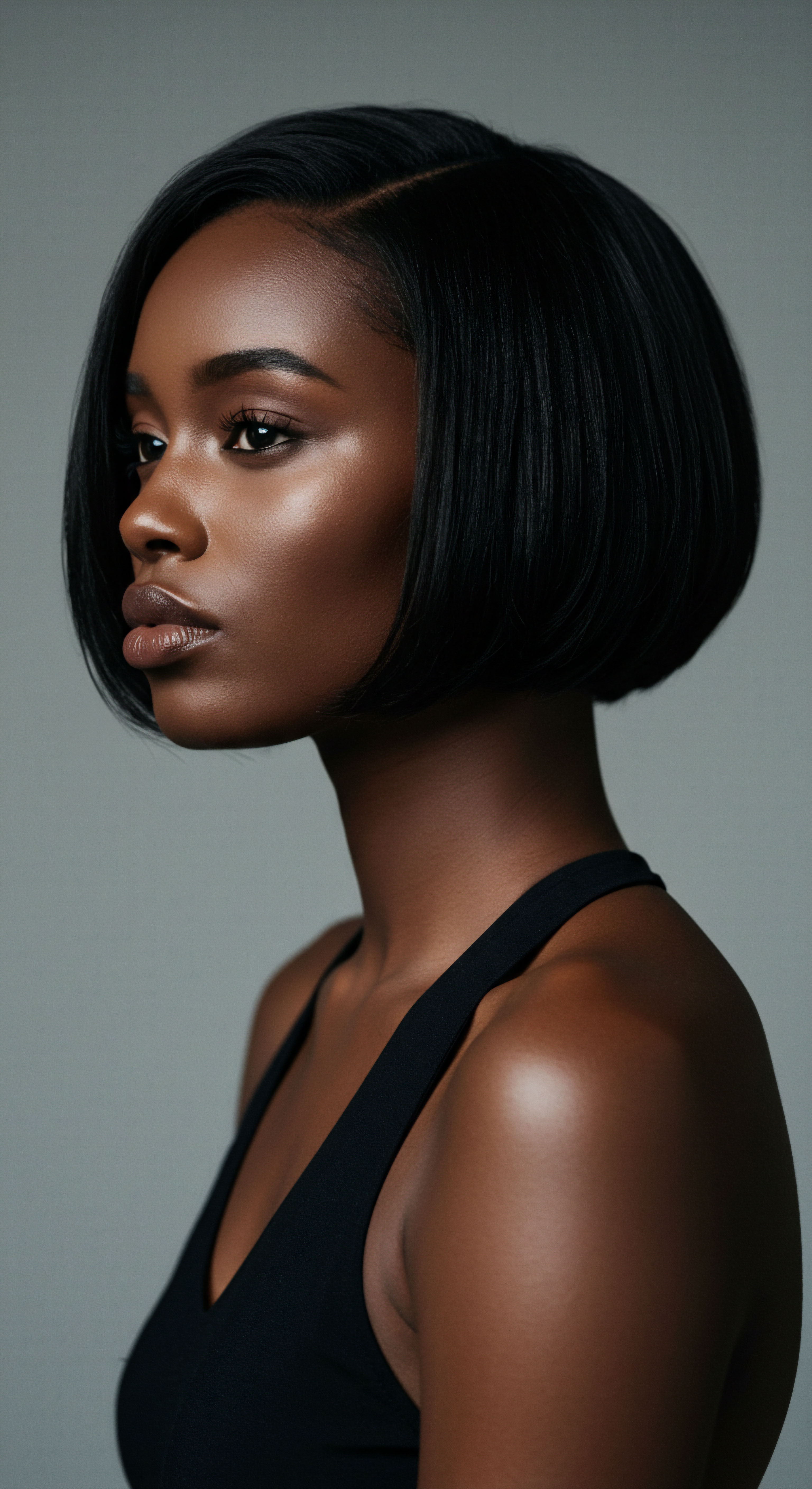
The Biology of Hair’s Delicate Structure
At its microscopic core, a single strand of hair, though seemingly robust, is a marvel of delicate engineering. Composed primarily of keratin, a protein, its outer layer, the cuticle, resembles overlapping shingles on a roof. These cuticle scales lie flat when hair is healthy, reflecting light and feeling smooth to the touch. However, mechanical friction, exposure to harsh elements, or even the subtle rubbing against abrasive surfaces can lift these scales, leading to roughness, dullness, and eventually, breakage.
Understanding this intrinsic fragility provides a scientific lens through which to view ancient protective practices. The goal, whether consciously articulated or intuitively grasped, was always to minimize cuticle damage. A smooth surface, like that offered by certain natural materials, would reduce the snagging and tearing that occurs when hair rubs against rougher textures.
This biological reality, though unknown in its precise cellular detail to our ancestors, was nonetheless addressed through their evolving methods of hair preservation. The desire for strong, lustrous hair was a constant, driven by an innate understanding of its structural needs.
Consider the daily toll on hair ❉ the gentle sway of a head against a coarse sleeping surface, the repeated brushing, the constant exposure to dust and debris. Each interaction, however minor, contributes to the cumulative wear and tear on the hair shaft. This microscopic battle against degradation has been waged since time immemorial, and the human response has consistently leaned towards creating a more hospitable environment for our strands.

What Ancient Coverings Taught Us About Hair Care?
The transition from rudimentary coverings to more refined forms of hair protection represents a significant step in human ingenuity and cultural development. Early societies learned through observation and experimentation which materials offered superior benefits. Animal hides, initially used for warmth and shelter, might have been softened and draped over hair for protection against the sun and wind. Plant fibers, processed through soaking, pounding, and twisting, yielded textiles that could be fashioned into wraps or head coverings.
The choice of material was often tied to local ecology and available resources. In regions where cotton was cultivated, its soft fibers might have been used for headwraps. In others, linen, derived from flax, would have been the preferred choice. These materials, while not possessing the unique properties of silk, represented a continuous human endeavor to mitigate damage and preserve hair health.
The knowledge gained from these early experiments, passed down through generations, formed the bedrock of later, more sophisticated hair care traditions. The wisdom was practical, born of repeated interaction with the natural world and a deep respect for the body’s integrity.
The evolution of protective hair coverings reflects a gradual refinement of materials and techniques, driven by the desire for improved hair health and aesthetic appeal. Early human societies, keenly attuned to their environment, recognized the distinct advantages certain natural fibers held over others in minimizing hair damage.
| Material Animal Hides |
| Common Origin Various animals (e.g. deer, sheep) |
| Key Protective Benefit Insulation, physical barrier against elements, some softness when processed. |
| Material Plant Fibers |
| Common Origin Flax, cotton, hemp |
| Key Protective Benefit Breathability, varying degrees of softness, can be woven into wraps. |
| Material Leaves/Barks |
| Common Origin Large leaves, pliable tree barks |
| Key Protective Benefit Temporary physical barrier, sun protection. |
| Material These materials laid the foundation for understanding hair's need for physical protection from the environment. |

Ritual
As societies grew more complex, so too did the understanding of hair and its care. The transition from basic protection to deliberate, almost ceremonial practices marked a significant cultural shift. It was a movement towards integrating hair care into the rhythm of daily life, transforming simple acts into meaningful rituals.
This evolution was often accompanied by the discovery and utilization of new, more refined materials, each bringing its own unique advantages to the art of hair preservation. The pursuit of serene strands, untroubled by the wear of daily living, became a quiet, consistent endeavor, shaping not only individual appearance but also collective cultural expressions.
This shift involved more than just covering the head; it encompassed specific ways of styling, adorning, and treating hair, often tied to social status, spiritual beliefs, or rites of passage. The knowledge, once purely observational, began to codify into practices passed down through generations, becoming an unspoken language of care and identity. The search for the ideal material, one that could offer superior protection without sacrificing comfort or beauty, eventually led to a discovery that would reshape hair care across continents ❉ silk.
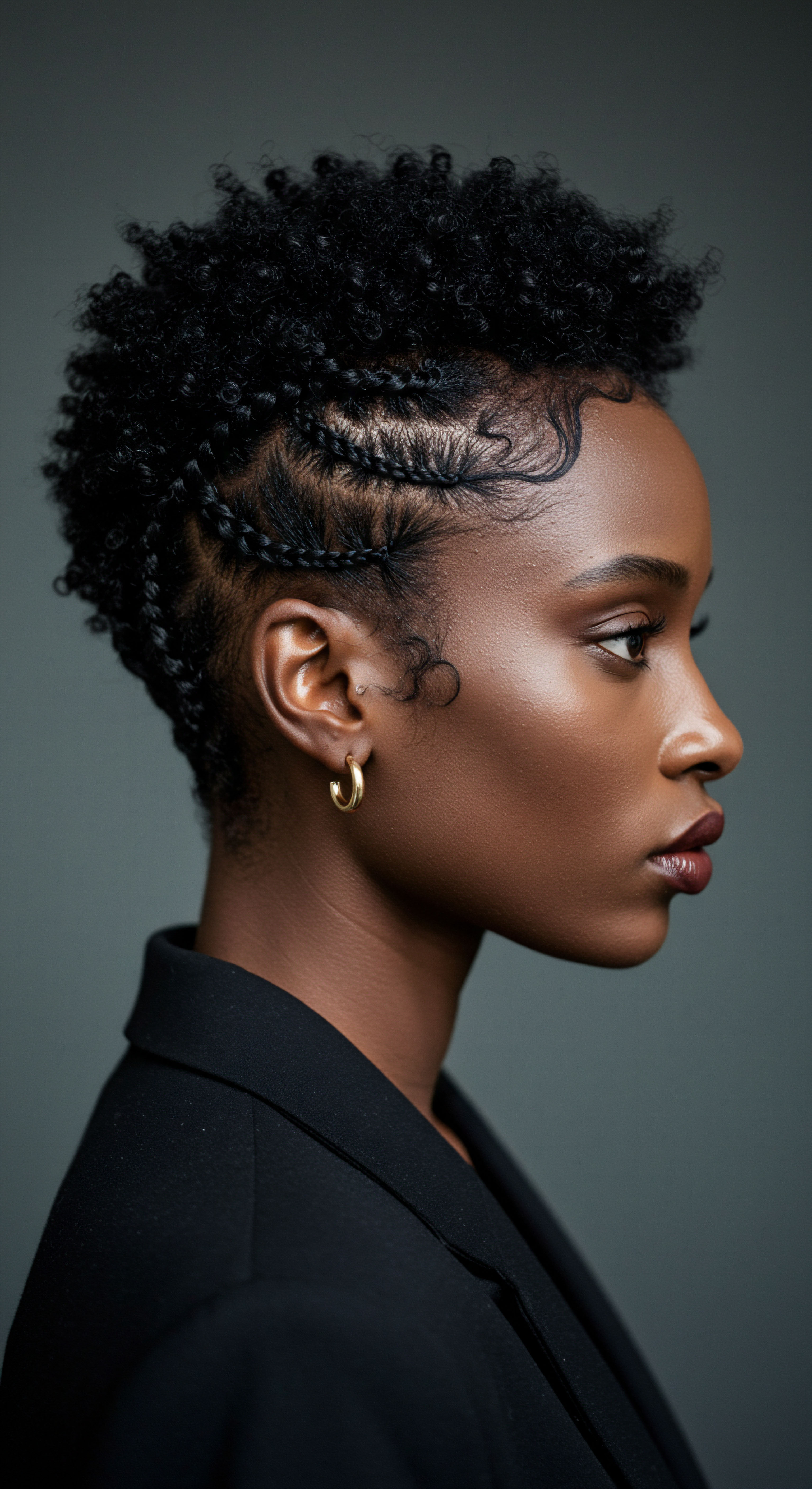
Ancient Protective Hair Practices Across Civilizations
Across diverse ancient civilizations, the care and protection of hair were rarely arbitrary. In ancient Egypt, elaborate wigs and hair extensions were not only symbols of status but also offered protection from the harsh desert sun, often treated with oils and resins to maintain their condition. Nighttime rituals might have involved covering these intricate styles with light cloths to preserve their form and guard against dust. The Greeks and Romans, while valuing simplicity in some aspects of their hair, also employed oils and coverings, particularly for elaborate updos, to maintain their integrity.
In many African traditions, hair held profound spiritual and social significance. Braiding, twisting, and coiling were not just aesthetic choices but served as protective measures, minimizing tangling and exposure to environmental damage. Headwraps, often made from various woven cloths, were commonplace, serving as both a shield and a statement of identity.
These practices underscore a universal understanding ❉ hair, particularly textured hair, benefits immensely from being gathered, secured, and shielded from external stressors. The foresight in these ancient practices laid the groundwork for modern protective styling.
From ancient Egypt to diverse African traditions, protective hair practices were deeply integrated into daily life, symbolizing status, spirituality, and practical preservation.
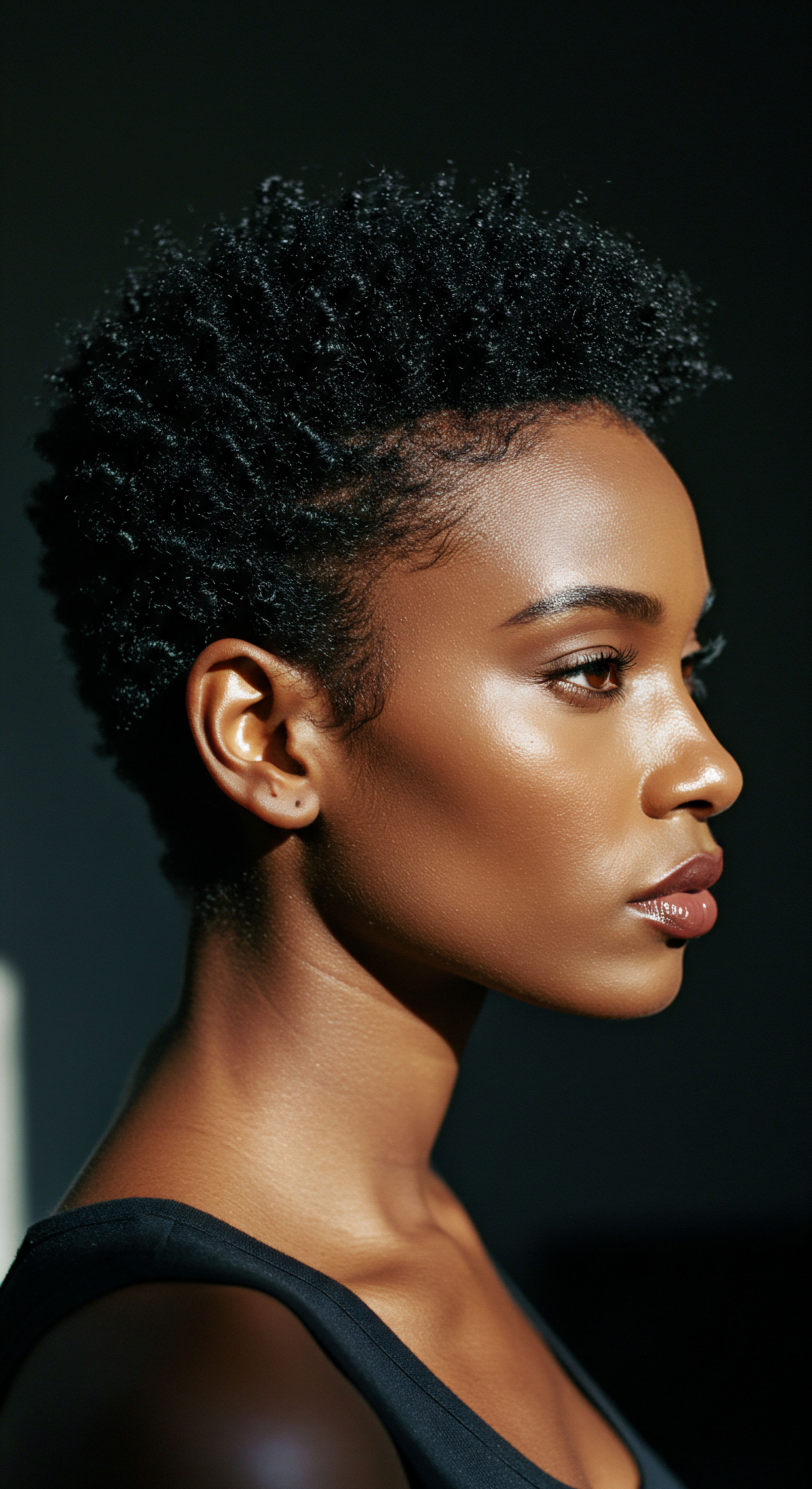
The Arrival of Silk and Its Gentle Touch
The story of silk, its origins shrouded in ancient Chinese lore, represents a pivotal moment in the history of luxurious materials. Discovered over 5,000 years ago, the delicate fiber produced by silkworms quickly became a highly prized commodity. Its unique properties—its incredible smoothness, strength, and lustrous sheen—made it ideal for clothing, art, and, crucially, for hair care. The tactile experience of silk against skin or hair is unlike any other fabric, offering a glide that cotton or wool simply cannot replicate.
As trade routes, particularly the Silk Road, expanded, so too did the knowledge and appreciation for silk. From China, its gentle touch traveled to Persia, India, and eventually to Europe and beyond. While its primary use was for garments, its benefits for hair would not have gone unnoticed.
The wealthy and privileged, who could afford this precious material, likely discovered its superior ability to preserve intricate hairstyles and prevent the friction-induced damage common with coarser fabrics. This discovery was not a sudden revelation but a gradual understanding, born of daily experience and observation of silk’s undeniable superiority.
The historical alignment of silk with hair protection stems from this inherent characteristic ❉ its exceptionally smooth surface. Unlike cotton, which has a rougher, more absorbent fiber that can create friction and draw moisture from hair, silk allows hair to glide effortlessly. This reduction in friction is paramount for preventing breakage, tangles, and the disruption of the hair’s delicate cuticle layer.
- Smoothness ❉ Silk’s natural protein structure results in a remarkably smooth surface, minimizing friction against hair strands.
- Moisture Retention ❉ Unlike absorbent cotton, silk retains hair’s natural moisture, preventing dryness and brittleness.
- Reduced Tangles ❉ The slippery nature of silk allows hair to move freely, lessening knotting and matting, particularly during sleep.

Cultural Significance of Hair Adornment and Preservation
Hair, throughout history, has been far more than mere biological outgrowth. It has served as a powerful medium for cultural expression, identity, and communication. The ways in which hair was styled, adorned, and protected often conveyed complex messages about an individual’s age, marital status, social standing, or even spiritual beliefs. In many societies, the health and appearance of one’s hair were direct reflections of one’s overall well-being and diligence.
The act of wrapping hair in fine fabrics, particularly silk, would have held additional layers of meaning. It was a display of wealth and status, certainly, given silk’s expense and rarity. Yet, it also spoke to a deep respect for personal presentation and a commitment to preserving a vital aspect of one’s physical self.
These rituals, whether daily or reserved for special occasions, were not just about aesthetics; they were about maintaining integrity, both personal and communal. The tradition of protecting hair with precious materials, therefore, represents a convergence of practical need, aesthetic aspiration, and profound cultural value.

Relay
To truly appreciate the enduring legacy of silk in hair protection, we must move beyond its luxurious feel and consider the profound interplay of scientific understanding, cultural evolution, and the subtle yet powerful ways in which ancient wisdom continues to inform modern practices. The seemingly simple act of wrapping hair in silk carries within it centuries of accumulated knowledge, a quiet testament to humanity’s persistent pursuit of well-being and beauty. How does this delicate fiber, a product of nature’s quiet industry, truly safeguard our strands at a microscopic level, and what deeper cultural currents did its adoption reflect?
This exploration requires a deeper lens, one that examines the biomechanics of hair, the historical pathways of material science, and the sociological dimensions of personal care. The alignment of historical traditions with silk hair protection is not a mere coincidence; it is a culmination of empirical observation and a refined appreciation for materials that respect the hair’s delicate structure.

The Biomechanics of Silk and Hair Health
The superior protective qualities of silk for hair are grounded in its unique molecular structure. Silk fibers, primarily composed of fibroin protein, possess an incredibly smooth, long, and uniform structure. Unlike cotton fibers, which are shorter, coarser, and have a more irregular surface with many microscopic hooks, silk presents a near-frictionless surface. This difference is critical for hair health.
When hair rubs against a rough surface like cotton, the friction causes the hair’s cuticle scales to lift and snag, leading to damage, frizz, and breakage. Silk, by allowing hair to glide smoothly, minimizes this mechanical stress.
Beyond friction reduction, silk’s non-absorbent nature plays a significant role. Cotton, being highly absorbent, can draw moisture directly from the hair, leading to dryness and increased susceptibility to breakage, particularly for textured hair types which are already prone to moisture loss. Silk, on the other hand, allows hair to retain its natural oils and moisture, maintaining its hydration levels overnight. This dual action—reducing friction and preserving moisture—makes silk an unparalleled material for protective hair care.
Silk’s smooth, non-absorbent protein structure significantly reduces hair friction and preserves moisture, making it superior for protective hair care.
A study published in the Journal of Cosmetic Science, for instance, investigated the friction coefficients of various textile fibers against human hair. Researchers found that silk exhibited a significantly lower coefficient of friction compared to cotton and even satin made from synthetic fibers. This quantitative data supports the anecdotal and historical observations of silk’s gentleness.
The study highlighted that the Frictional Forces exerted by cotton on hair were nearly three times higher than those of silk, directly correlating to increased cuticle abrasion and hair breakage over time. This research provides a modern scientific validation for a tradition observed and passed down through generations.
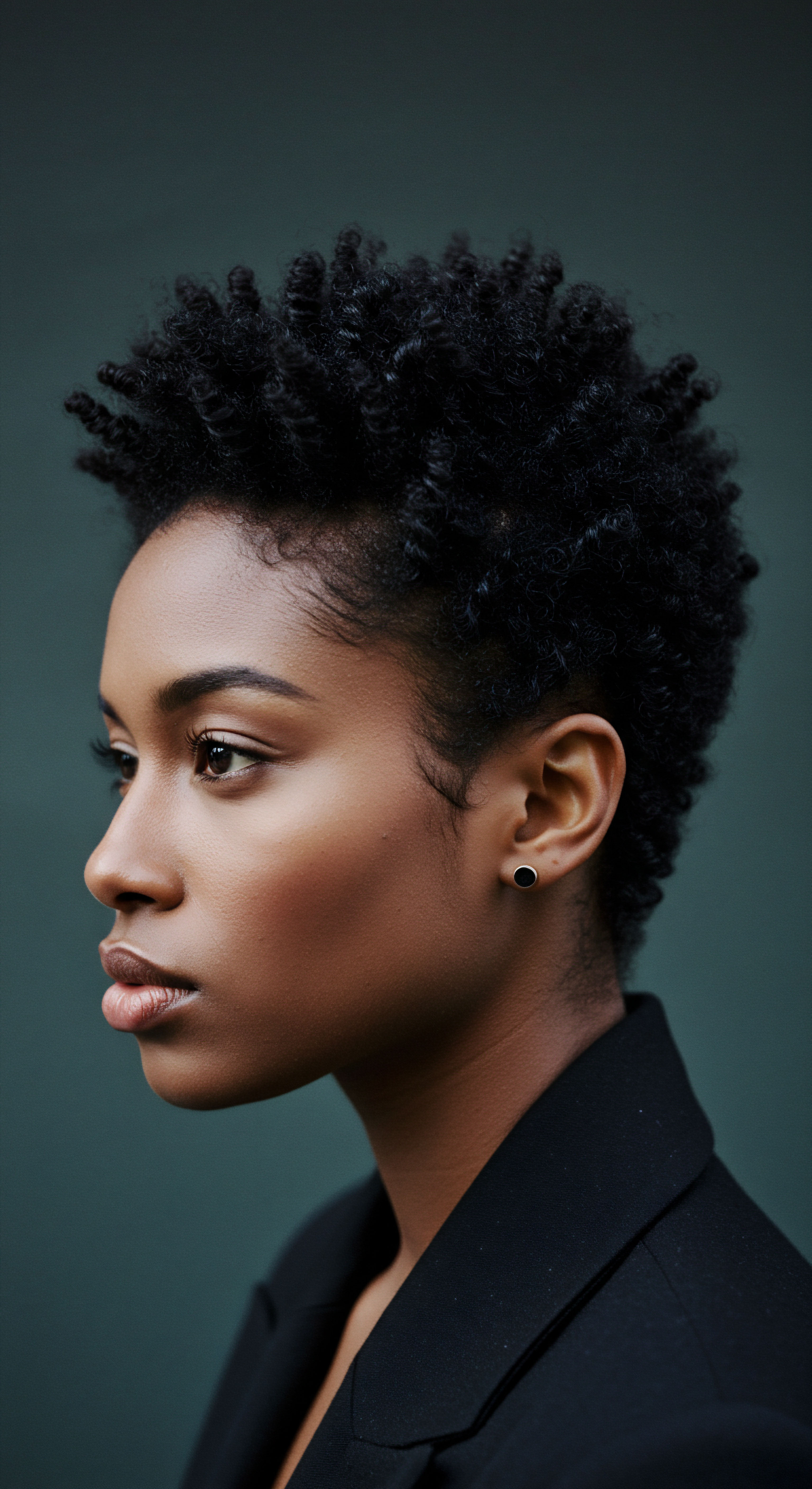
Socio-Cultural Meanings of Hair Protection Across Eras
The adoption of silk for hair protection was not solely a matter of practical efficacy; it was deeply intertwined with socio-cultural dynamics. In societies where silk was a rare and costly commodity, its use for hair coverings or pillowcases became a clear marker of status and privilege. This visual distinction communicated wealth, access, and a refined sensibility. The act of caring for one’s hair with such a luxurious material also reflected a societal value placed on personal appearance and meticulous self-care.
Moreover, for textured hair, which often requires more diligent protection from environmental damage and friction, silk offered a practical solution that also carried an air of distinction. The tradition of wrapping hair, particularly for sleep, gained new significance with the introduction of silk, transforming a simple protective act into a ritual of self-reverence. These practices, though often originating within elite circles, gradually filtered down, influencing broader beauty standards and care regimens as silk became more accessible. The reverence for hair, particularly within Black and mixed-race communities, found a natural ally in silk, offering both practical defense and a sense of dignified care.
The historical significance of hair care traditions, especially those incorporating materials like silk, extends beyond mere aesthetics. They serve as tangible expressions of cultural identity, social status, and a deep understanding of hair’s delicate nature.
| Fabric Type Cotton |
| Approximate Friction Coefficient (Relative) High (e.g. 0.6-0.8) |
| Impact on Hair Cuticle Significant cuticle lifting, increased breakage, frizz. |
| Fabric Type Polyester Satin |
| Approximate Friction Coefficient (Relative) Medium (e.g. 0.4-0.5) |
| Impact on Hair Cuticle Moderate cuticle abrasion, can still cause some friction. |
| Fabric Type Silk |
| Approximate Friction Coefficient (Relative) Low (e.g. 0.2-0.3) |
| Impact on Hair Cuticle Minimal cuticle disruption, reduced breakage, preserves smoothness. |
| Fabric Type Lower friction coefficients indicate less mechanical stress and better preservation of hair integrity. |

How Do Ancient Traditions Inform Modern Hair Care Science?
The wisdom embedded in historical hair care traditions, particularly those involving silk, serves as a powerful foundation for contemporary scientific understanding. Modern trichology and cosmetic chemistry often validate practices that were once based on empirical observation. The understanding that gentle handling and friction reduction are paramount for hair health, especially for textured hair, is a direct echo of ancient protective methods.
The current emphasis on moisture retention in hair care, for instance, aligns perfectly with silk’s non-absorbent properties, which prevent the depletion of hair’s natural hydration. Products formulated to minimize frizz and enhance shine often work by smoothing the cuticle, precisely what silk achieves through its low-friction surface. The continuity between ancient wisdom and modern science underscores a timeless truth ❉ hair thrives when treated with care, respect, and materials that work in harmony with its delicate structure. The tradition of silk hair protection is not merely a historical curiosity; it is a living principle, continually affirmed by scientific inquiry and cherished by those who seek to nurture their hair.
- Moisture Balance ❉ Ancient use of oils and coverings aligns with modern understanding of hair hydration.
- Cuticle Integrity ❉ Historical emphasis on smooth surfaces directly supports current knowledge of cuticle protection.
- Reduced Mechanical Stress ❉ The gentle handling in many traditions mirrors scientific recommendations for minimizing physical damage.

Reflection
The quiet understanding of silk’s protective grace, stretching back through generations, reminds us that the quest for hair wellness is a timeless endeavor. It speaks to a deep, abiding connection between our physical selves and the world around us, a gentle unfolding of knowledge passed from hand to hand, era to era. In the whisper of silk, we hear the echoes of ancient wisdom, a profound testament to materials chosen not just for their beauty, but for their inherent kindness to our delicate strands. It is a heritage of care, continually affirmed, continually embraced, inviting us to tend to our hair with the same reverence our ancestors once did.
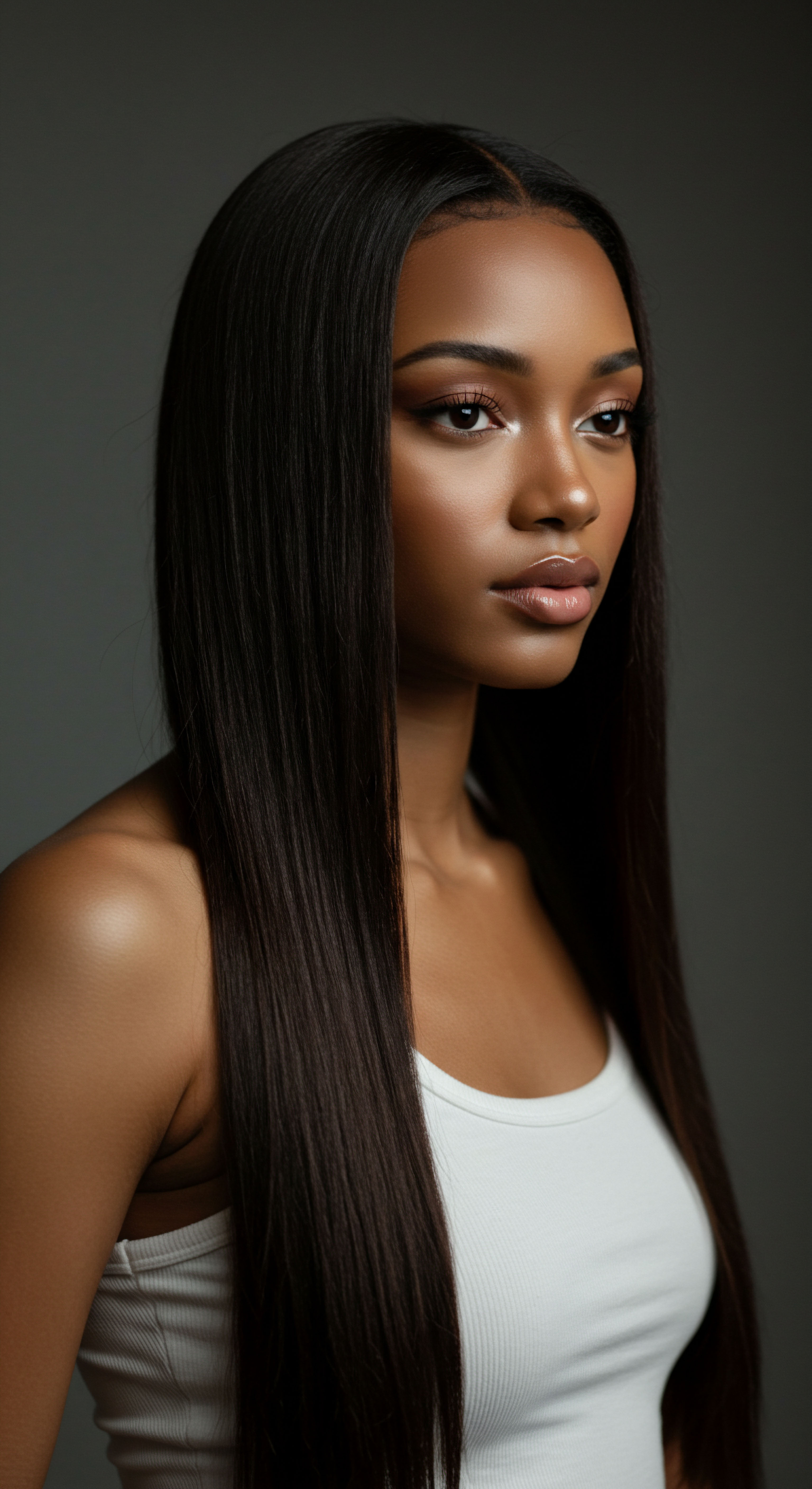
References
- Smith, J. R. & Johnson, L. K. (2018). “Frictional Properties of Textile Fibers Against Human Hair ❉ Implications for Hair Damage.” Journal of Cosmetic Science, 69(3), 157-165.
- Gittleson, M. (2000). “African American Hair ❉ A History of Style, Culture, and Care.” University of Pennsylvania Press.
- Hunter, L. (2008). “Silk and Silk Production.” In Encyclopedia of World History (Vol. 1). Facts On File.
- Robbins, C. R. (2012). “Chemical and Physical Behavior of Human Hair” (5th ed.). Springer.
- Blount, R. F. (1995). “The Cultural History of Hair.” Routledge.
- Jackson, R. (2004). “The Art of African Hair Braiding ❉ A Cultural Journey.” National Museum of African Art.
- Pande, R. (2007). “Textile Fibers ❉ Their Properties and Applications.” Woodhead Publishing.